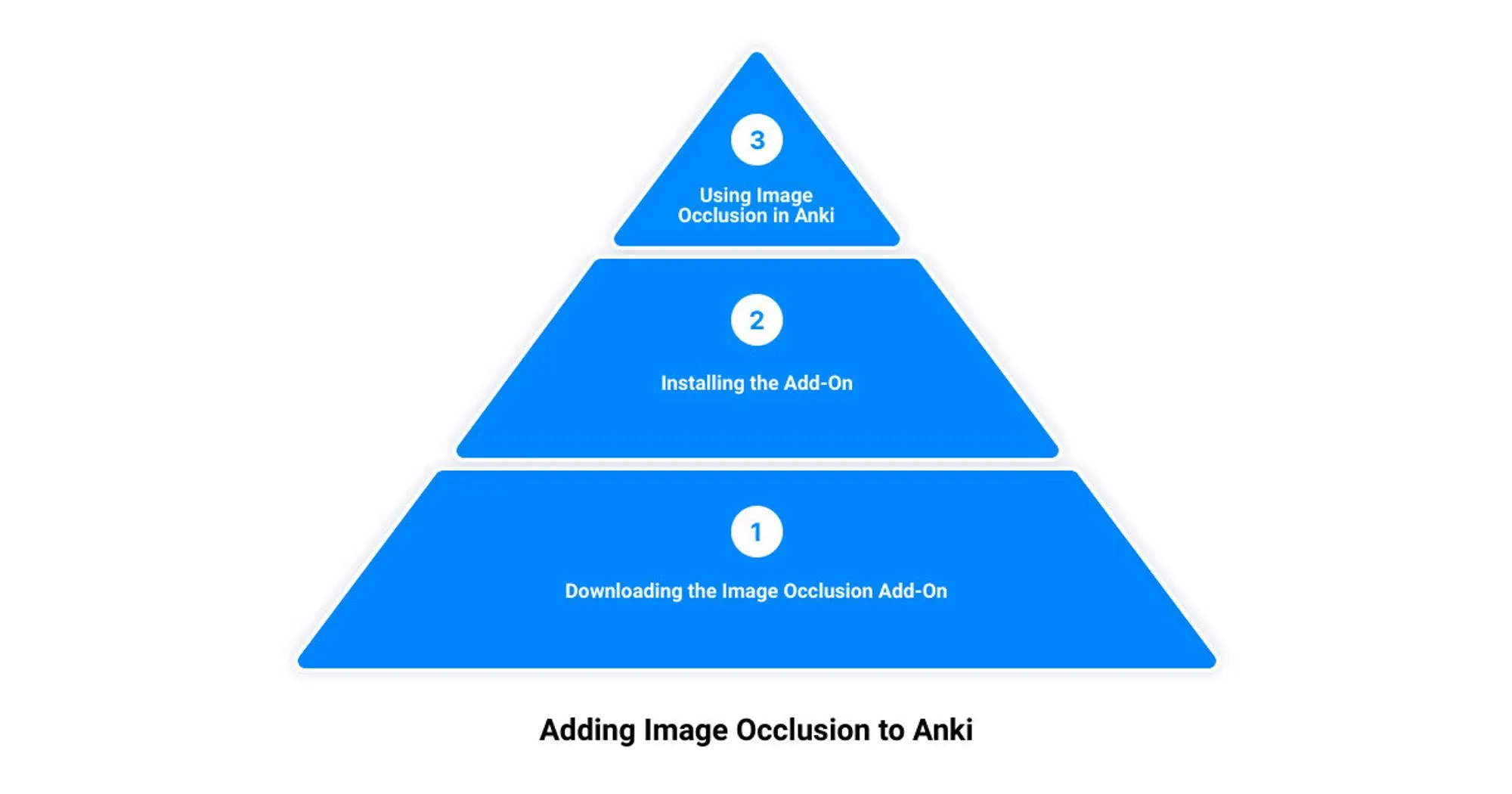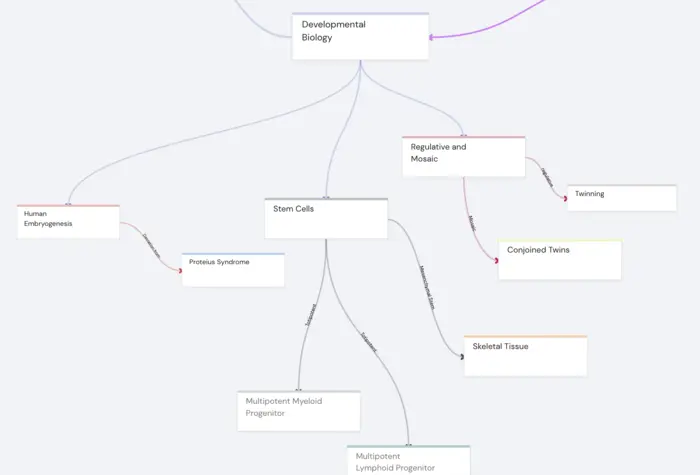Imagine a tool that can enhance your memory retention, simplify complex concepts, and make learning visually engaging. Welcome to the world of Anki and the power of Image Occlusion. This article will guide you through this innovative learning technique that has been transforming the way lifelong learners, such as yourself, approach their study sessions.
Anki is a versatile flashcard app that harnesses the power of spaced repetition to help users master new information effectively. It's a favorite among language learners, medical students, and anyone seeking a robust tool to improve memory retention. One of the most powerful features of Anki is its ability to support image occlusion.
Image Occlusion is an ingenious tool that enhances the visual learning experience by hiding specific parts of an image, encouraging active recall and improving memorization. This can be particularly useful when you're tackling visually complex subjects or learning Mandarin, including Chinese characters.
In this article, we will explore the basics of image occlusion, how to add it to Anki, and how to maximize your learning with this tool. We will also look at how you can integrate image occlusion with the Traverse learning app to supercharge your Mandarin learning experience.
So, if you're ready to take your learning to the next level, let's dive into the fascinating world of Anki and the power of image occlusion.
Understanding the Basics of Image Occlusion
What is Image Occlusion?
Picture this: You're studying Mandarin and grappling with the complexity of Chinese characters. Would it help if you could hide parts of the image, creating a mental challenge that forces you to recall the hidden information? This is exactly what Image Occlusion does!
Image occlusion is a powerful learning technique where certain elements within an image are obscured or 'occluded'. This compelling method triggers active recall, reinforcing your memory and understanding of the material. It's like playing a memory game where the cards are your study materials.
When we talk about Image Occlusion in the realm of Anki, we're referring to the Image Occlusion Enhanced add-on. This add-on allows you to create custom flashcards with occluded images, enabling you to quickly and effortlessly hide parts of an image by placing 'masks' over the areas you choose. It's a clever way of leveraging your visual and spatial understanding to better retain information.
Why Use Image Occlusion in Anki?
If you're wondering why you should add Image Occlusion to your Anki learning toolbox, consider this: Not only does it optimize your study sessions, especially in visually-oriented subjects like Mandarin, but it also makes studying more engaging and enjoyable.
The beauty of Image Occlusion lies in its ability to harness the picture superiority effect. This psychological phenomenon suggests that people tend to remember images better than text or spoken information. By using images to convey complex ideas and information, Image Occlusion makes it easier to retain and recall the material.
Image Occlusion also champions active recall, requiring you to actively retrieve information from memory, which strengthens neural connections and improves long-term retention. This is particularly useful when learning Mandarin characters, prompting you to remember their intricate strokes and form.
Moreover, Image Occlusion allows for targeted learning. You can customize your flashcards to focus on the areas you find most challenging, helping you allocate your study time efficiently. Whether you're struggling with a particular set of characters or a complex ideogram, Image Occlusion lets you focus your efforts effectively.
Overall, Image Occlusion enhances the learning experience, making study sessions more engaging and enjoyable. Better engagement helps maintain motivation and interest in the material, leading to better overall outcomes. So why not give it a try and unleash the power of Anki with the mind-blowing Image Occlusion add-on?
How to Add Image Occlusion to Anki
Unleashing the power of Anki starts with understanding how to use one of its most potent tools - the Image Occlusion add-on. This section will guide you through the process of adding this game-changing tool to your Anki app.
Step-by-Step Guide to Adding Image Occlusion Add-On
Let's dive into the step-by-step process of incorporating the Image Occlusion add-on to your Anki app.
Download Anki: If you don't have it installed yet, download Anki from the official website. Anki is available for Windows, macOS, Linux, and mobile platforms such as iOS and Android.
Open Anki: After installing, launch the Anki application. If you have an AnkiWeb account, sign in to synchronize your flashcards across devices. If you don't have an account yet, you can create one for free.
Find the Image Occlusion Enhanced Add-on: Head to the AnkiWeb add-on page for Image Occlusion Enhanced to find the add-on code and detailed information about the add-on.
Copy Add-on Code: The add-on code for Image Occlusion Enhanced is 1374772155. Copy this code.
Install the Add-on in Anki: In the Anki application, navigate to the main menu and click on "Tools" > "Add-ons" > "Get Add-ons...". A dialog box will appear, prompting you to enter the add-on code. Paste the code you copied earlier into the box and click "OK."
Restart Anki: After the installation is complete, you'll receive a confirmation message. Restart Anki to activate the image occlusion add-on.
Now, you're all set to start creating powerful image occlusion flashcards!
Troubleshooting Common Issues When Adding Image Occlusion
Even with a step-by-step guide, you may encounter some bumps along the way. Here are a few common issues when adding Image Occlusion and how to troubleshoot them:
Issue: The Image Occlusion Enhanced option doesn't appear in the "Type" dropdown menu in the "Add" window.
Solution: Make sure you've restarted Anki after installing the add-on. If you've already restarted Anki and the option still doesn't appear, double-check that you entered the correct add-on code.
Issue: The Image Occlusion Editor doesn't open when I insert an image.
Solution: Check that you've selected the "Image Occlusion Enhanced" card type in the "Add" window. If you have, try closing and reopening Anki.
Issue: I'm unable to draw shapes in the Image Occlusion Editor.
Solution: Try using a different image file format. If that doesn't work, reinstall the Image Occlusion Enhanced add-on.
By following this guide, you'll be able to add the Image Occlusion add-on to Anki and start optimizing your learning sessions. In the next section, we'll cover the best practices for using Image Occlusion and a case study on how to use Image Occlusion for Mandarin learning.

Maximizing Your Learning with Image Occlusion
Supercharging your Anki flashcards with the Image Occlusion add-on is just the first step. To fully reap the benefits of this powerful tool, it's essential to understand the best practices for using Image Occlusion. Let's delve into these strategies and also explore a case study of how Image Occlusion can accelerate Mandarin learning.
Best Practices for Using Image Occlusion
The effectiveness of Image Occlusion lies in its strategic application. Here are some top tips to make the most of this tool:
Leverage the Picture Superiority Effect: Image Occlusion capitalizes on the human tendency to remember images better than text. Always use high-quality, relevant images to convey complex ideas and information.
Practice Active Recall: Image Occlusion requires you to actively retrieve information from memory. Make sure you genuinely recall the information instead of merely recognizing it.
Customize Your Flashcards: Tailor your flashcards to focus on areas you find most challenging. Image Occlusion allows you to obscure specific parts of an image, enabling you to concentrate on your weak points.
Combine with Text-Based Resources: While Image Occlusion is a great tool for visual learning, it doesn't replace text-based resources. Use it in conjunction with other learning methods for a comprehensive study session.
Integrate with Spaced Repetition: Image Occlusion and spaced repetition make a powerful combination. Adjust review intervals to reinforce memory and learning.
Case Study: Using Image Occlusion for Mandarin Learning
Let's take the case of a lifelong learner aiming to master Chinese characters - a visually complex subject ideal for Image Occlusion.
The learner could use Image Occlusion to create flashcards with an image of each character, obscuring parts of the character or its pinyin transliteration. This would prompt the learner to actively recall the hidden information, reinforcing memory and understanding of the character.
Moreover, Image Occlusion could be used to learn the stroke order of Chinese characters. By obscuring specific strokes in a diagram, the learner would have to actively recall the order, enhancing their ability to write the characters.
The learner could also use Image Occlusion to learn Mandarin vocabulary. For instance, they could obscure parts of an image representing a word, requiring them to actively recall the Mandarin term for the given image.
Incorporating Image Occlusion into their Mandarin study routine would allow the learner to take advantage of the Picture Superiority Effect, enhance their active recall, and engage with the material in a more stimulating and effective manner. The result would be a significant boost in their Mandarin learning efficiency and mastery.
By understanding the best practices for using Image Occlusion and applying these strategies to your studies, you can optimize your learning experience and achieve your learning goals faster. Whether you're learning Mandarin or any other visually complex subject, Image Occlusion can be a game-changer in your learning journey.

Integrating Image Occlusion with Traverse Learning App
Having explored the power of Image Occlusion within Anki, it's time to take it up a notch by incorporating this technique into your learning experience with the Traverse Learning App. Traverse not only offers all the flashcard features Anki provides but also allows for the creation of mind maps and concept maps that can serve as the foundation for your flashcards. It's a powerful tool that will truly revolutionize your Mandarin learning.
Importing Anki Decks with Image Occlusion to Traverse
Transitioning from Anki to Traverse is a breeze, thanks to its 100% compatibility with Anki's flashcard deck format. So, if you're already using Anki decks with Image Occlusion, you won't lose any of your progress.
To import your Anki decks into Traverse, you merely need to follow a simple process that not only preserves your scheduling information but also includes your images, audio, and other media, as well as the image occlusions you've made so far. Tags and sub-decks are also saved, ensuring a smooth transition and continuity in your learning process.
Once your Anki decks are imported, you can organize all of your decks and cards into visual mind maps in Traverse. This allows you to immediately see how things connect, giving you a broader perspective of your learning material.
Enhancing Your Mandarin Learning with Traverse and Image Occlusion
When learning Mandarin, a language with thousands of unique characters and complex structures, the benefits of Image Occlusion become even more apparent. By using this technique in Traverse, you can occlude parts of the Mandarin characters or sentences, encouraging active recall and improving memorization.
But it doesn't just stop at Image Occlusion. The real power of Traverse lies in its unique feature of 'Mind Map Occlusion'. You can create mind maps of Mandarin language structures, concepts, or characters, and then occlude them. This strategy enhances the mental connections you built in the mapping process, providing an even more robust learning experience.
Remember our lifelong learner, Raleigh, who used these exact techniques to achieve a 99th percentile MCAT test score? He began with traditional Image Occlusion in Anki, but when he discovered Traverse, he found the missing piece to his learning puzzle. By integrating Image Occlusion with Traverse's mind mapping features, he was able to develop a deeper understanding that continues to serve him well in medical school.
So, are you ready to revolutionize your Mandarin learning with Traverse and Image Occlusion?
Conclusion: The Impact of Image Occlusion on Your Learning Journey
Harnessing the power of Image Occlusion within Anki can have a transformative effect on your learning experience. It's like turning the lights on in a previously dark room, illuminating the path to knowledge retention and recall with scientific precision.
Recap of the Benefits of Image Occlusion
Let's take a moment to revisit the benefits of Image Occlusion. This technique leverages the picture superiority effect, where images are remembered better than text. It promotes active recall by requiring you to retrieve information from memory, strengthening neural connections and improving long-term memory retention. Image Occlusion also enhances spatial learning, helping you grasp complex structures and their relationships.
This method is ideal for targeted learning, allowing you to focus on challenging areas and allocate your study time efficiently. By introducing variety and visual stimulation to your study sessions, you keep the engagement level high, which in turn enhances motivation and interest. Not to forget, it pairs perfectly with spaced repetition techniques, optimizing your review intervals and reinforcing memory.
Final Thoughts on Image Occlusion and Anki
Image Occlusion is more than just an add-on to Anki. It is a powerful tool that can elevate your learning experience, enrich your comprehension, and enhance your retention of complex information. Whether you're studying Mandarin and grappling with intricate Chinese characters or delving into any other visually complex subject, Image Occlusion can be your secret weapon for success.
Remember, learning is not just about absorbing information, but about understanding, retaining, and being able to recall it when needed. The combination of Anki and Image Occlusion offers you a scientifically-backed approach to achieve these learning goals.
So as you continue your journey in mastering Mandarin or any other subject, remember to utilize the power of Image Occlusion in Anki. It's a game-changer, a tool that can help you transform information into knowledge, and knowledge into wisdom.
Onwards and upwards, fellow lifelong learners! Let's continue to explore, learn, and grow with the help of powerful tools like Image Occlusion in Anki.

